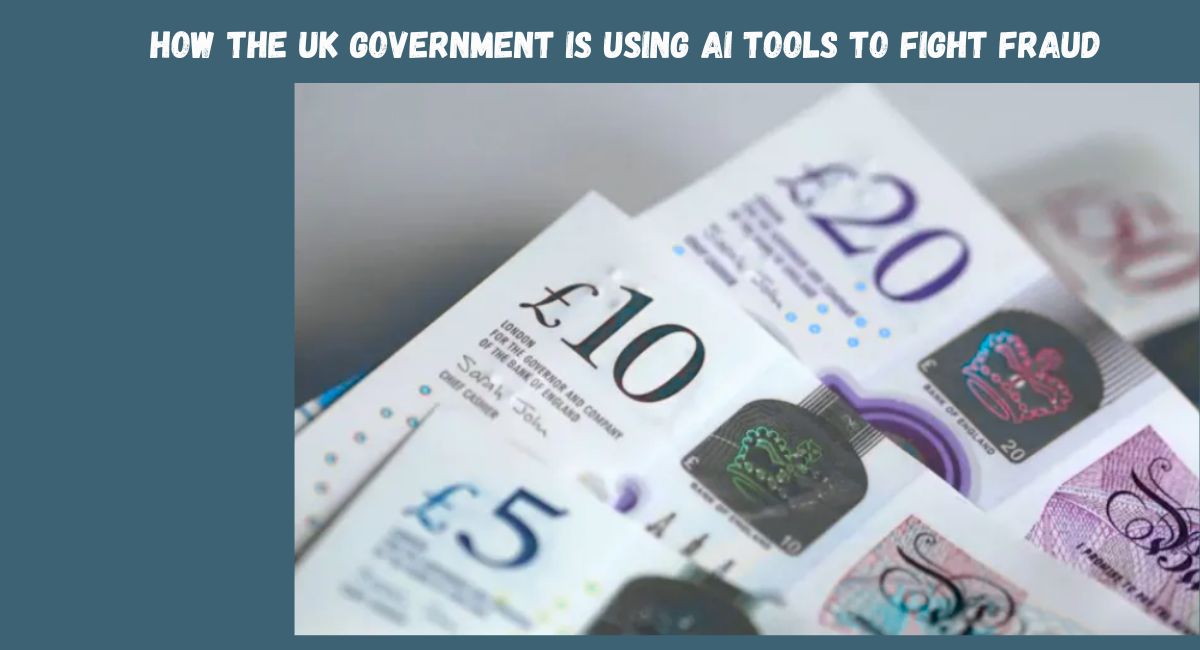Fraud has always been a serious challenge for governments, but in the digital age, the scale has grown faster than ever. The UK government anti-fraud strategy is now leaning heavily on artificial intelligence to stop fraudsters before they strike. By introducing an AI fraud detection tool, the government claims to have achieved a £500m fraud recovery, the largest fraud recovery by the UK government in a year. This success is not only significant for Britain but also offers valuable lessons for the United States, where similar challenges such as PPP loan misuse remain unresolved.
This article explores how the UK government is using AI tools to fight fraud and strengthen cybersecurity. From the Covid-19 pandemic fraud to the latest Fraud Risk Assessment Accelerator explained, we’ll break down the strategies, challenges, and future outlook.
Why Fraud Detection Needs AI
Fraud is no longer confined to fake paperwork or simple scams. During the Covid-19 pandemic fraud, criminals exploited government schemes at record levels. From council tax fraud claims to illegal social housing subletting, billions slipped through the cracks. Traditional audits and manual checks could not keep up with the speed and sophistication of fraud.
This is where the UK fraud detection using artificial intelligence stands out. By analyzing millions of records in seconds, the Cabinet Office new AI fraud tool has prevented losses that humans alone could never detect. The need is global. The U.S. faced similar challenges with pandemic relief funds. Without AI’s role in preventing financial fraud, both nations risk losing billions more.
Inside the UK Anti-Fraud Summit
The turning point came with the global anti-fraud summit. This event brought together leaders from the UK, U.S., Canada, and Australia. At the summit, Josh Simons anti-fraud summit announcement confirmed that cooperation across borders was essential. Fraud is international, and one country’s weakness quickly becomes another’s problem.
The summit highlighted how AI tool licensed to US, Canada, Australia would transform detection. By sharing international fraud prevention tools, governments can strengthen global cybersecurity. For the U.S., this collaboration means access to tested systems that already worked in the UK.
Covid Corruption Commissioner and New Fraud Probes
The UK appointed a Covid Corruption Commissioner to lead investigations into fraudulent pandemic loans. His team uncovered shocking examples. One involved a woman who created a fake company and transferred money abroad. Another revealed how Bounce Back Loans fraud turned into a national scandal. These findings sparked widespread debate about how Bounce Back Loan fraud worked and why oversight was weak.
The commissioner’s work parallels the Covid loan repayment scandal in the U.S. Both nations saw fraudsters abuse relief programs. While Britain recovered how much Covid fraud was recovered by the UK government, the U.S. continues to investigate billions in misused funds.
AI-Powered Tools Recovering Billions
Central to the UK’s success is the Fraud Risk Assessment Accelerator. This Cabinet Office fraud prevention tool identifies weaknesses in new policies before criminals can exploit them. Put simply, it helps design fraud-proof government policies. By predicting vulnerabilities, the AI saves money before it is ever lost.
The Fraud Risk Assessment Accelerator explains how effective prevention beats expensive recovery. Since launch, the UK has achieved £500m fraud recovery, with Covid loan scams and fraud examples accounting for nearly £186m. This breakthrough demonstrates why the U.S. is considering adopting similar systems.
Challenges:
Bias and Errors in AI Fraud Systems
AI is powerful, but it isn’t perfect. An earlier welfare fraud detection system was found to show bias. Age, nationality, and disability were unfairly flagged, sparking an Amnesty International report on government AI use. Critics described this as a major AI bias in welfare fraud detection.
Such cases fuel Amnesty International AI criticism and highlight concerns over government AI surveillance. The U.S., before adopting the model, must learn from these missteps. Fraud detection needs to be fair, transparent, and free from harmful bias.
Beyond Fraud:
How AI is Shaping Other Sectors
The fight against fraud is just the beginning. AI is transforming industries worldwide. In entertainment, Bollywood actors are pushing back against deepfakes, while regulators work to stop AI tools to recover money lost to fraud scams on social media. Finance companies are using AI to block Covid loan scams and fraud examples before customers even see them.
In healthcare, AI tools are reducing billing fraud and ensuring accurate insurance claims. These innovations show how AI’s role in preventing financial fraud extends beyond government alone. For the U.S., adopting AI fraud prevention could mean billions saved across multiple industries.
AI Infrastructure:
The Big Deal About Data Centres
AI doesn’t work without power, data, and infrastructure. The UK has invested heavily in AI data centres to process enormous datasets. These hubs are critical for fraud detection and cybersecurity. Without them, the Cabinet Office new AI fraud tool would not function at scale.
The U.S. is already expanding similar data infrastructure, but the Whitehall fraud concerns prove that security and cost must also be managed. The growth of AI requires not only stronger servers but also stronger safeguards.
New Government Offices to Seize AI Opportunities
The UK has launched new offices to guide AI adoption. Their role is to ensure that fraud prevention, cybersecurity, and innovation move together. These institutions set the stage for licensing AI fraud detection tools abroad.
For the U.S., this means new opportunities. Fraud prevention startups, research labs, and policy makers can benefit from Britain’s experience. The Cabinet Office fraud prevention methods could inspire similar offices across Washington and state capitals.
Future Outlook:
AI, Fraud Prevention, and Global Regulation
The future of fraud prevention lies in collaboration. AI will continue to evolve, and fraudsters will evolve with it. Nations that share international fraud prevention tools will be stronger together. The AI tool to recover money lost to fraud will likely be adopted in more countries, creating a global shield.
Still, Rachel Reeves £7bn fraud loss serves as a reminder that much remains unrecovered. The UK and the U.S. both must push forward with smarter systems. The balance between innovation and surveillance will define the next decade. Governments must ensure that tools designed to protect people do not end up harming public trust.
Table: AI Fraud Recovery Comparison (UK vs USA)
| Country | Fraud Recovery (2024-25) | Major Focus Area | Key Challenge |
| UK | £500m fraud recovery | Covid-19 pandemic fraud, loans, housing | AI bias in welfare fraud detection |
| USA | Billions still under probe | PPP loan misuse, healthcare billing | Oversight gaps, slow recovery |
The UK’s bold experiment shows how AI scans policies for weaknesses before fraud spreads. For the U.S., adopting similar technology could protect billions, strengthen cybersecurity, and build resilience against global threats.




